What is Vertical Farming?
“Vertical farming is the practice of growing crops in vertically stacked layers. It often incorporates controlled-environment agriculture, which aims to optimize plant growth, and soilless farming techniques such as hydroponics, aquaponics, and aeroponics.” - Wikipedia
A Brief Overview of Vertical Farming
For pretty much all of Time, plants have been confined to growing in soil, and therefore have had to grow horizontally–roots down, stems and leaves up. Hydroponic farming changes all that. By isolating the nutrients and minerals from the soil and adding them directly into the water, plants are able to grow without relying on soil, giving rise to the practice of “vertical farming”.
The Advantages of Vertical Farming
By 2050, the global population is set to surpass 9.7 billion people, representing a growth rate of 26%, while the amount of arable land available to us continues to decline due to industrial development and urbanization. Over the past 40 years, we have already lost about one-third of the arable land on the planet, which paired with this rate of population growth presents a very real problem of how we will feed everyone.
Vertical farming can counteract this problem in two ways. First, vertical farming operations require no soil, meaning plants can grow indoors in areas where there is no longer any arable land. Second, the process of growing vertically–whether through plant orientation or stacking–makes it possible to grow a lot of food in a relatively small space.
The Greenery S
The Greenery S is a vertical hydroponic farm in an insulated, custom-built shipping container. Unlike traditional farms, the plants in the Greenery S grow vertically indoors without soil: The plants get all their nutrition from water and their light energy from powerful LEDs. The Greenery S grows year-round in any location, climate, or season, allowing us to make our mission of enabling food production anywhere in the world a reality.
Vertical Farming in the Greenery S
The Greenery S is divided into two sections: the Nursery Station for seedlings and the Cultivation Area for maturing crops. We use two growing systems strategically to ensure the highest rate of plant success. The main difference between the two is that the Nursery Station incubates young plants horizontally in two stacked troughs, while the Cultivation Area is a true vertical set up, with the older plants held securely in individual plant panels.
The Nursery Station
All our plants start by growing horizontally in two stacked seedling troughs in the Nursery Station. We use this method for the seedlings because growing vertically (‘out’, instead of ‘up’) puts more of a strain on the plant’s stem since the plant needs to fight gravity harder. For this reason, putting seedlings directly into a vertical position can cause damage to the young stems and negatively impact their development. The nursery station can support up to 4,608 baby plants at a time. The plants remain in the nursery station for 14-21 days until they’ve developed sturdy stems and small leaves, after which they’re ready to move into their next home: the Cultivation Area.
The Cultivation Area
Once seedlings have spent two to three weeks in the Nursery Station, their stems are strong enough to handle the vertical arrangement in the Cultivation Area. The Greenery S Cultivation Area can hold over 8,000 plants in 88 of our proprietary high-density five-channel plant panels. The lightweight and sturdy removable panels are shaped from food-safe, high-impact polystyrene. More than any other feature, these panels maximize vertical farming potential in the farm, unlocking options for new crop possibilities, simplifying workflow, and maximizing yields. The five-channel design allows you to customize crop arrangements based on plant size and to optimize Greenery S production by activating unused space between the plants.
Benefits of Starting a Vertical Farming Business
Vertical farming is one of the best farming methods for people who have limited land access, capital, or farming experience.
Grow Food Year-Round
This indoor farming method keeps plants safe from pests and the elements, so you can grow, harvest, and sell the freshest local food, regardless of the season.Full Transparency & Food Safety
Vertical hydroponic farming allows food to be grown closer to its final destination, which simplifies the food supply chain, creating better transparency and reducing the risk of food-borne illness.No Land Necessary
With vertical farming systems like the Greenery, you can grow fresh food anywhere in the world, even in places with limited space or poor soil conditions.Create Positive Change
No matter which causes you champion–sustainability, local business development, or good nutrition–vertical hydroponic farming systems give you a platform to build a business with a strong message.Sell A High-Quality Product
Plants growing in indoor vertical hydroponic systems always have perfect conditions, allowing them to develop beautiful structures and strong flavors.Reduce Labor
Vertical hydroponic systems require no tilling, weeding, heavy-lifting, or extensive stooping and kneeling. All you need to maintain healthy yields is regular cleaning and maintenance.Types of Vertical Farming
Vertical farms can be grouped into categories based on two criteria: the farming method and the farm size. For example, the Freight Farms Greenery is a hydroponic container vertical farm.
By Farming Method:
Hydroponics: This is the method used in the Greenery. Plant roots are fed water directly using nutrient-rich water. Learn more about hydroponics
Aquaponics: Aquaponics uses fish and plants in a symbiotic combination in which plants are fed the aquatic animals’ discharge or waste.
Aeroponics: Plant roots hang suspended in the air and are periodically misted with the nutrient solution.
By Farm Size:
Personal: This is a method of food production that you typically see in people’s homes. It includes a few towers, panels, or stacks that grow enough to feed a few people, but are not viable for commercial use.
Container: This is the method used in the Greenery. The containers are used to create commercial-scale farms in small spaces where the growing square footage is increased many times over with vertical farming setups. Learn more about container farming
Building: Some larger farming companies, such as AeroFarms or Plenty, retrofit entire buildings with vertical farming growing structures to create indoor plant warehouses.




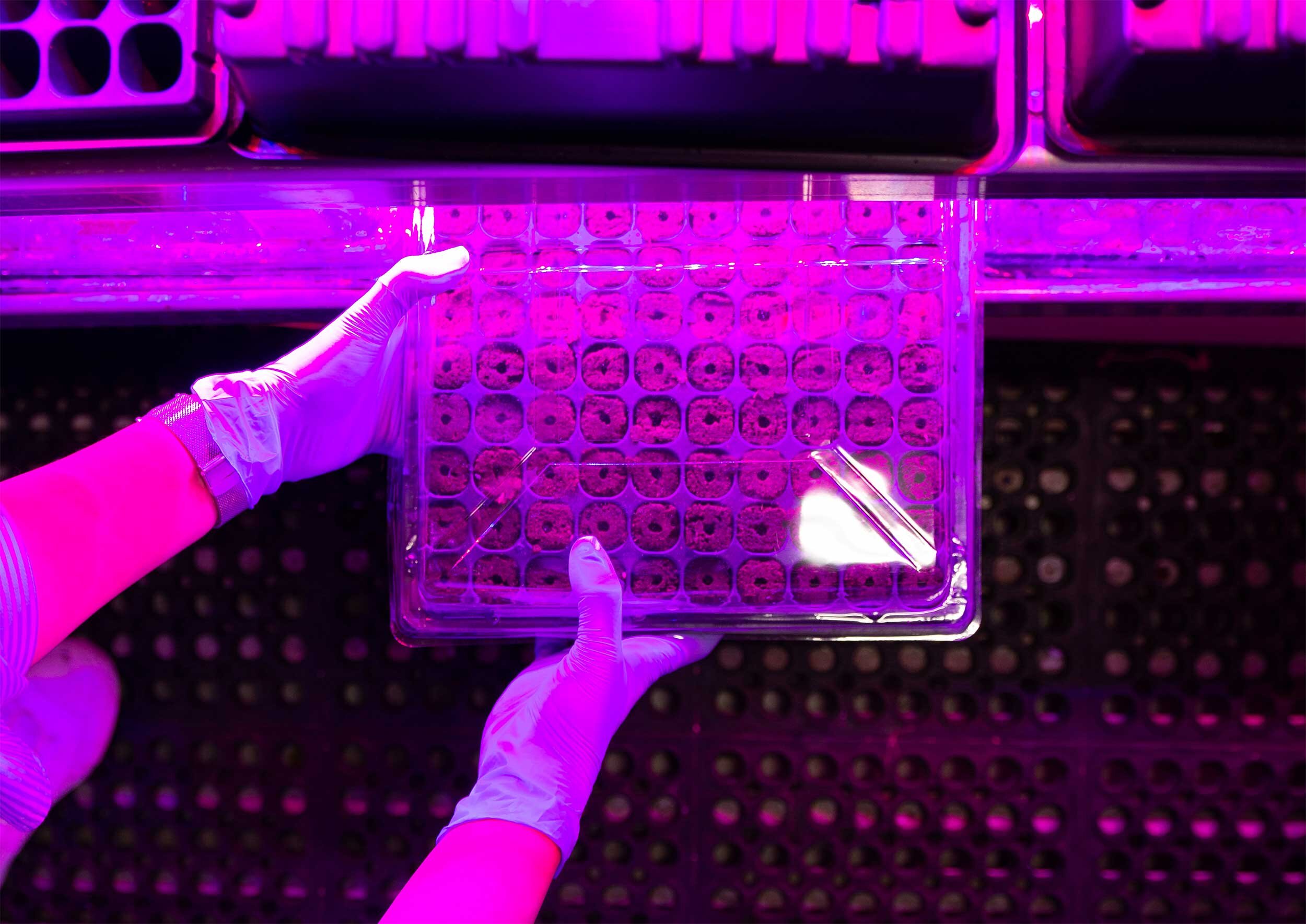

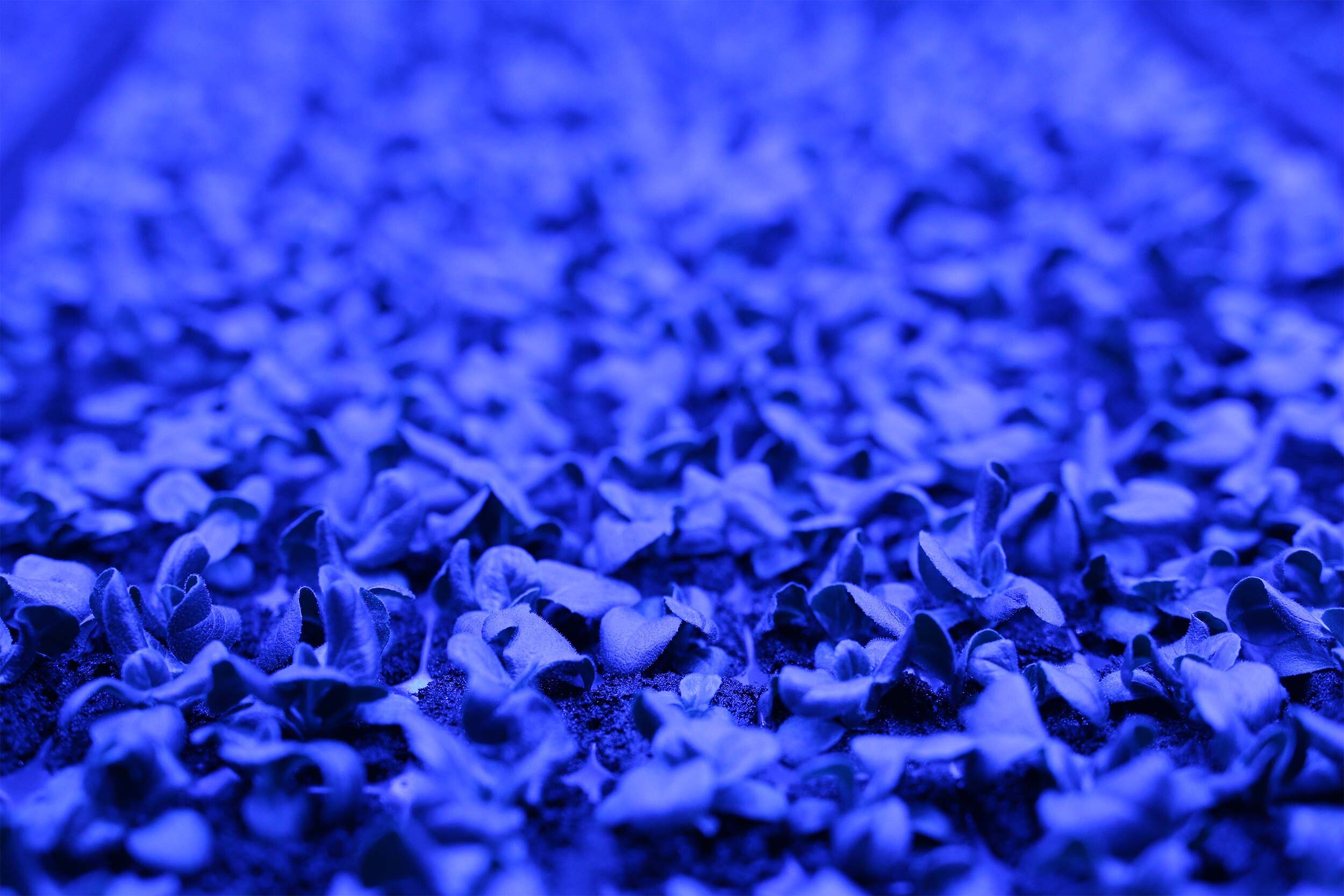
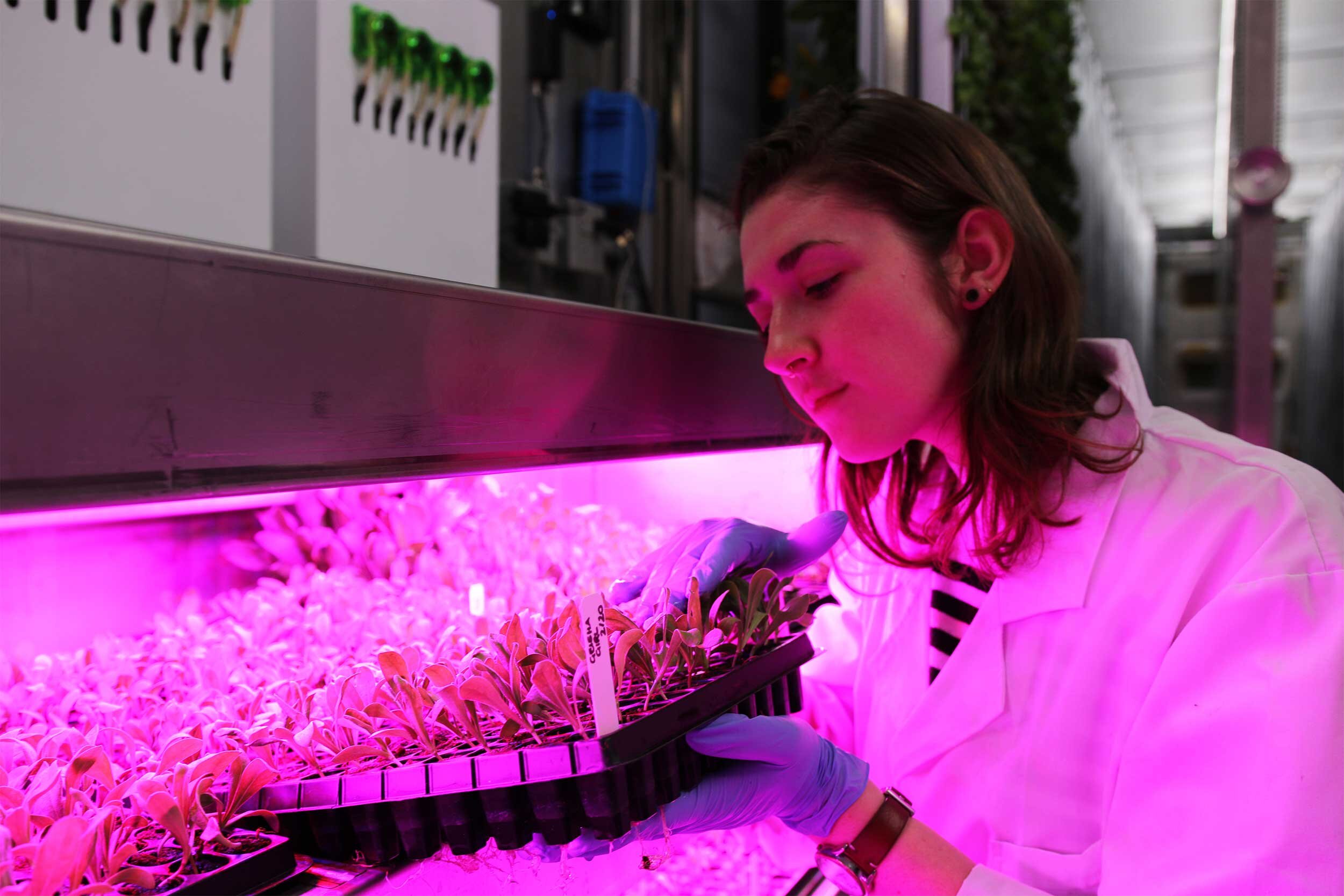
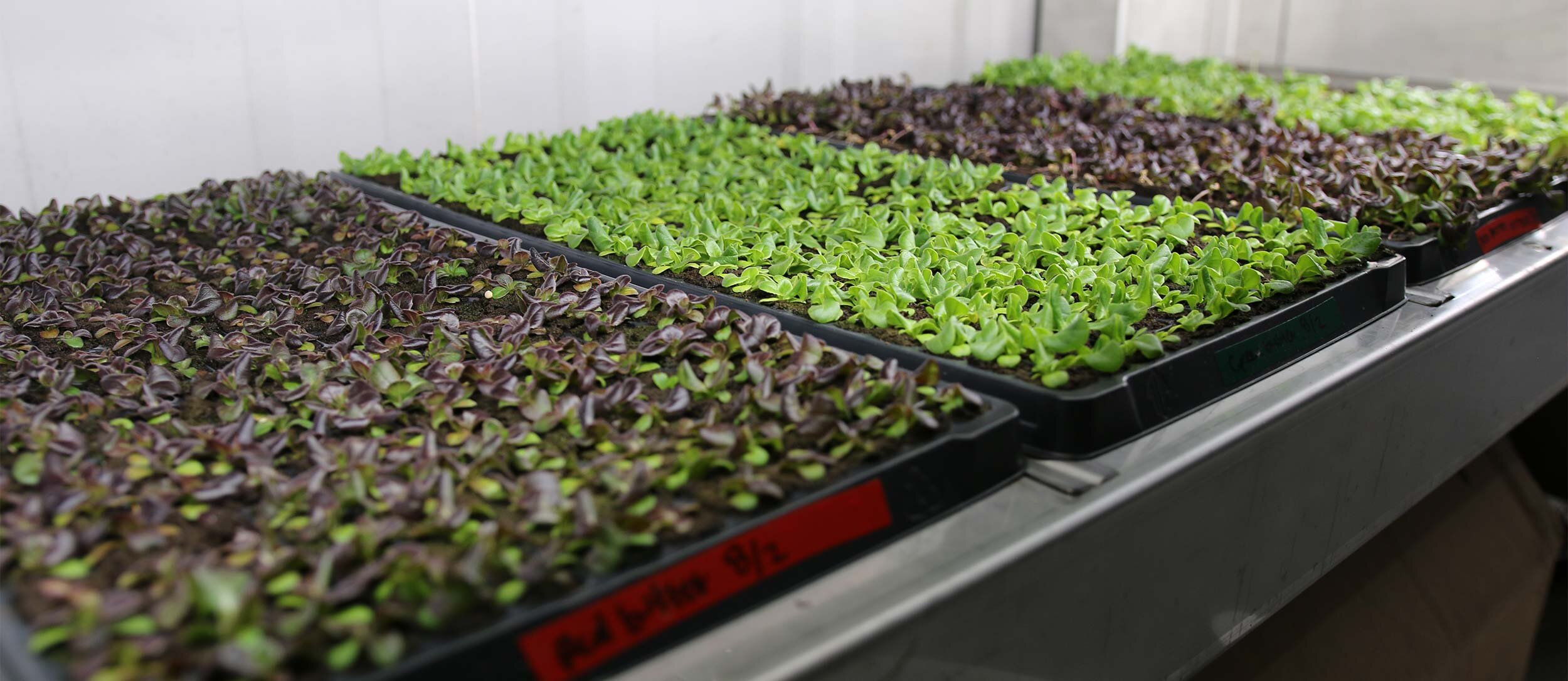
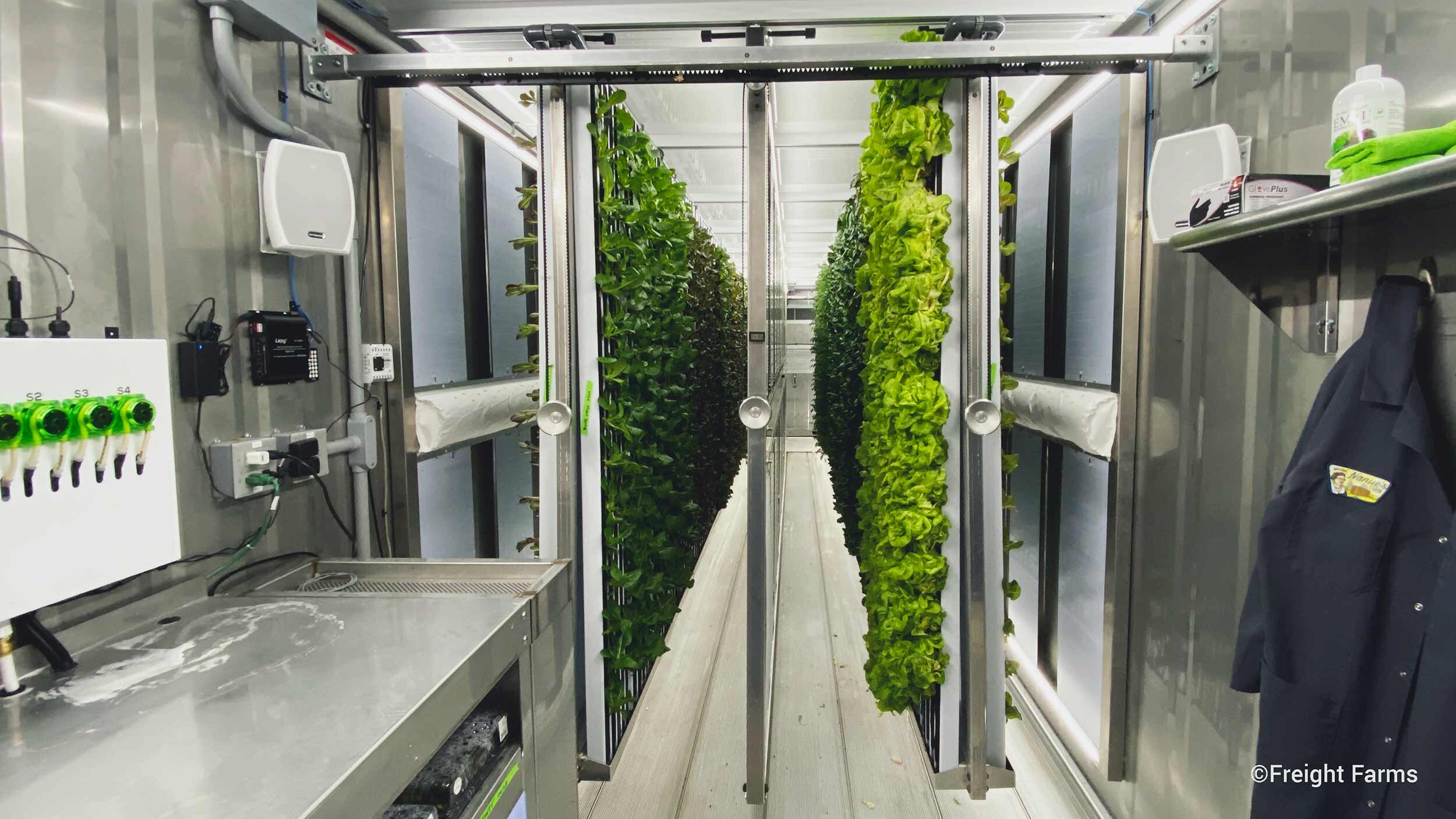
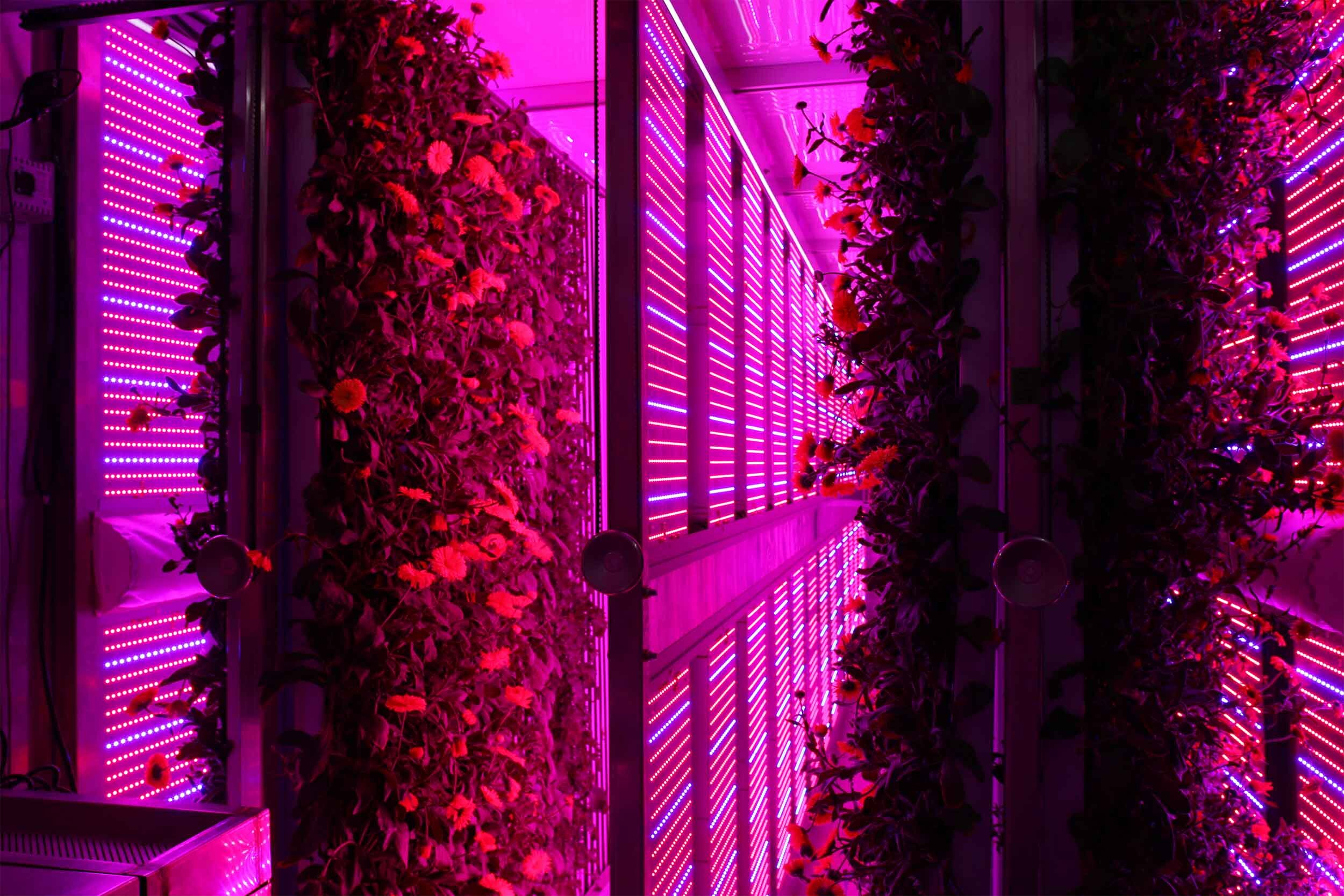
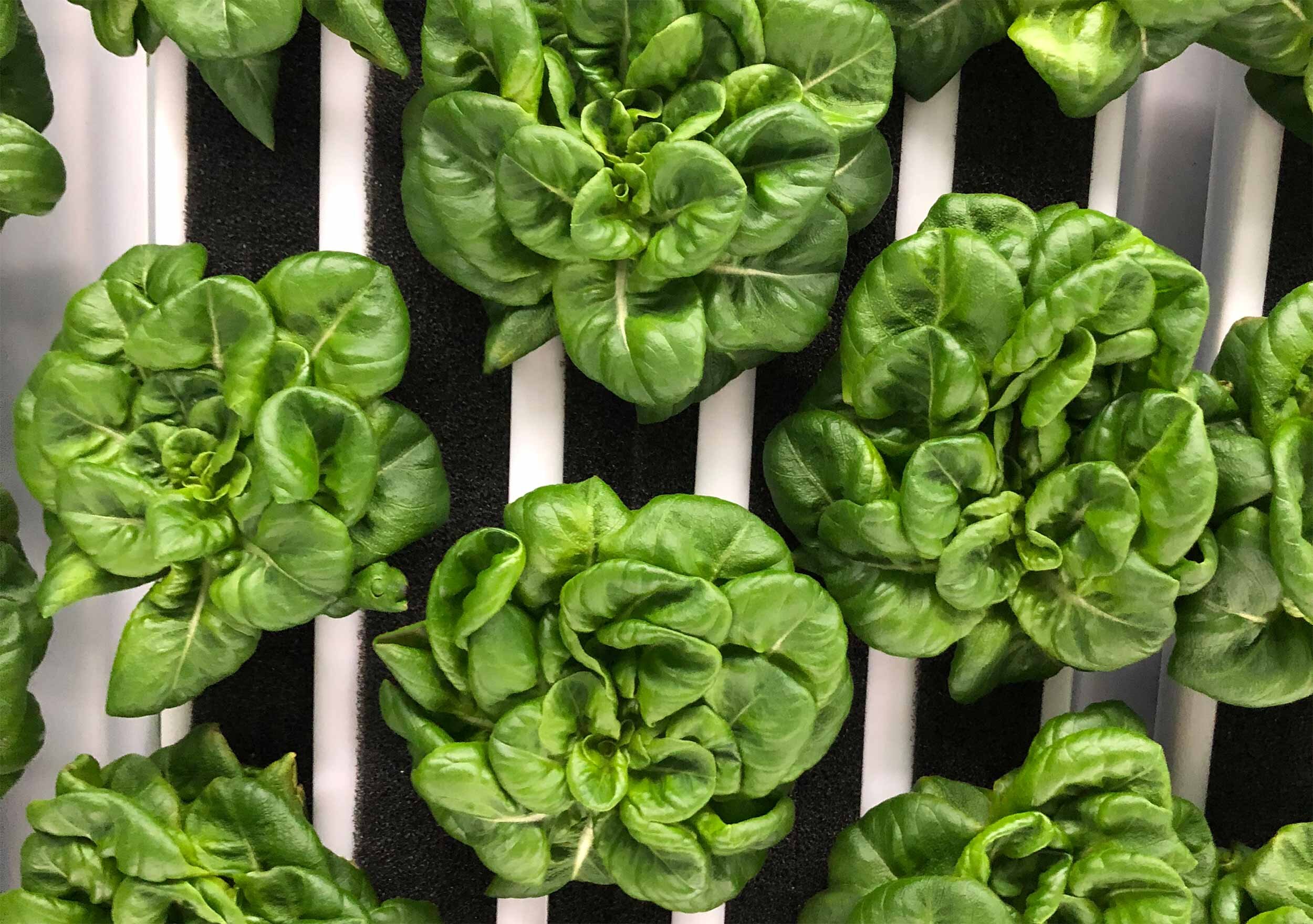
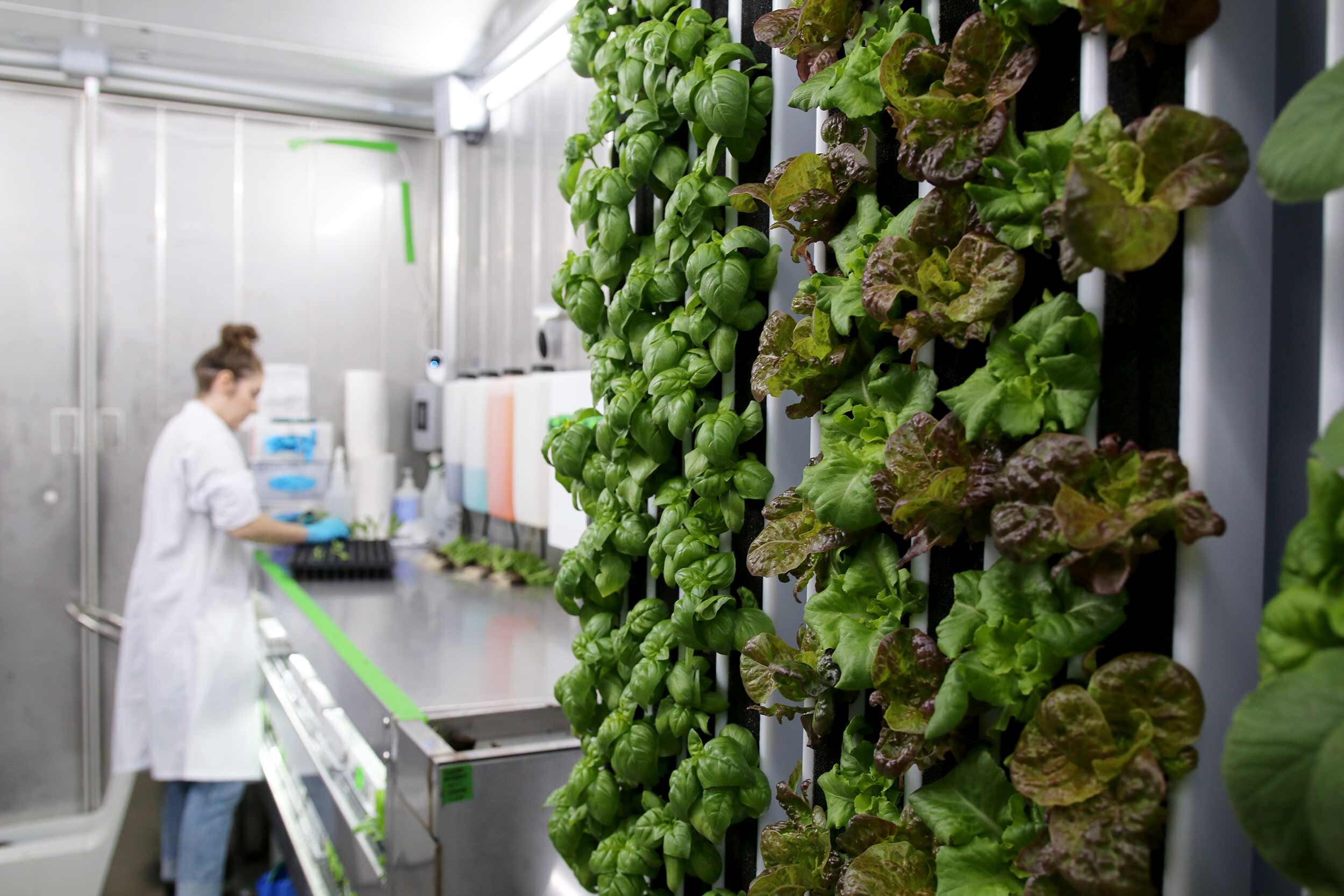
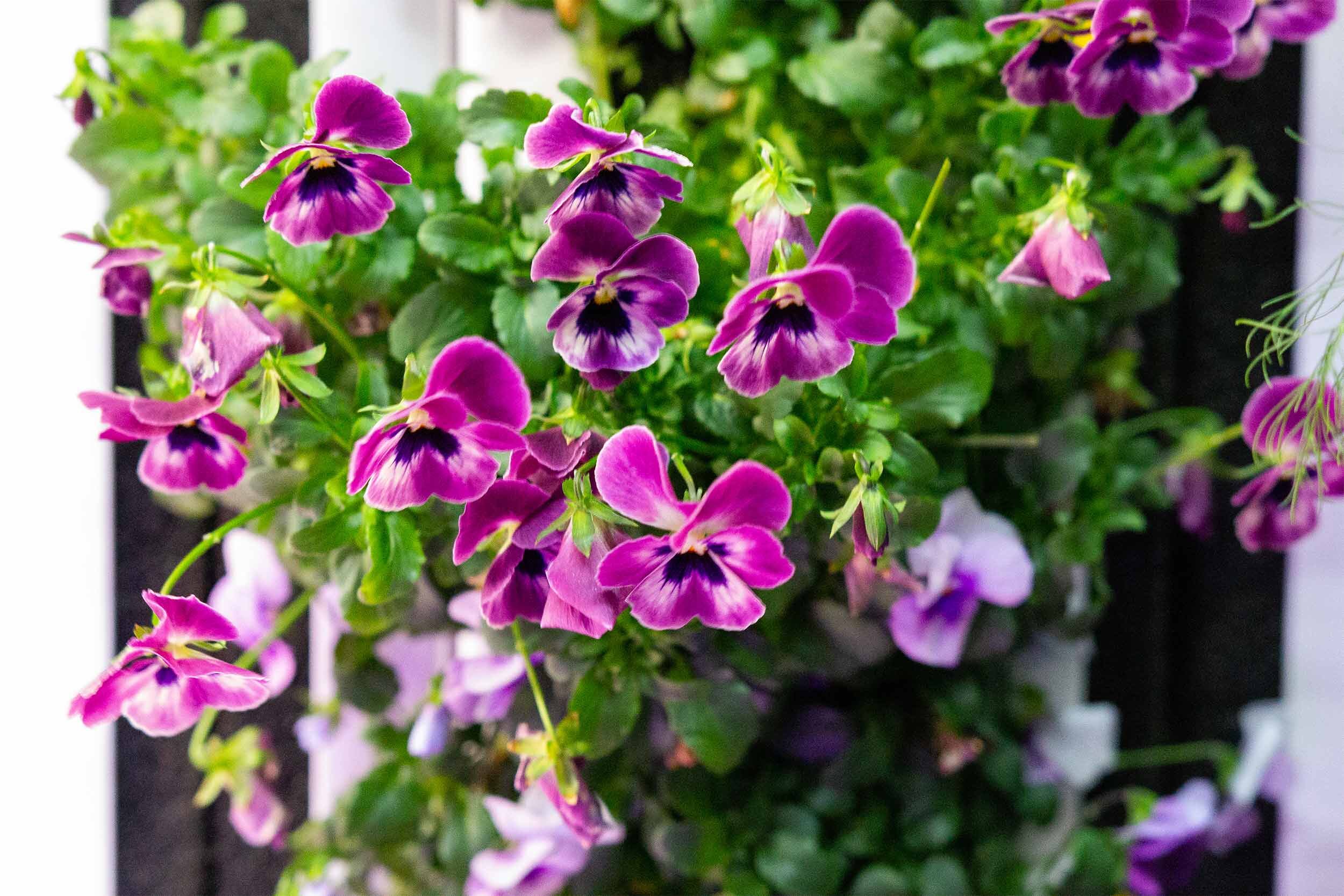

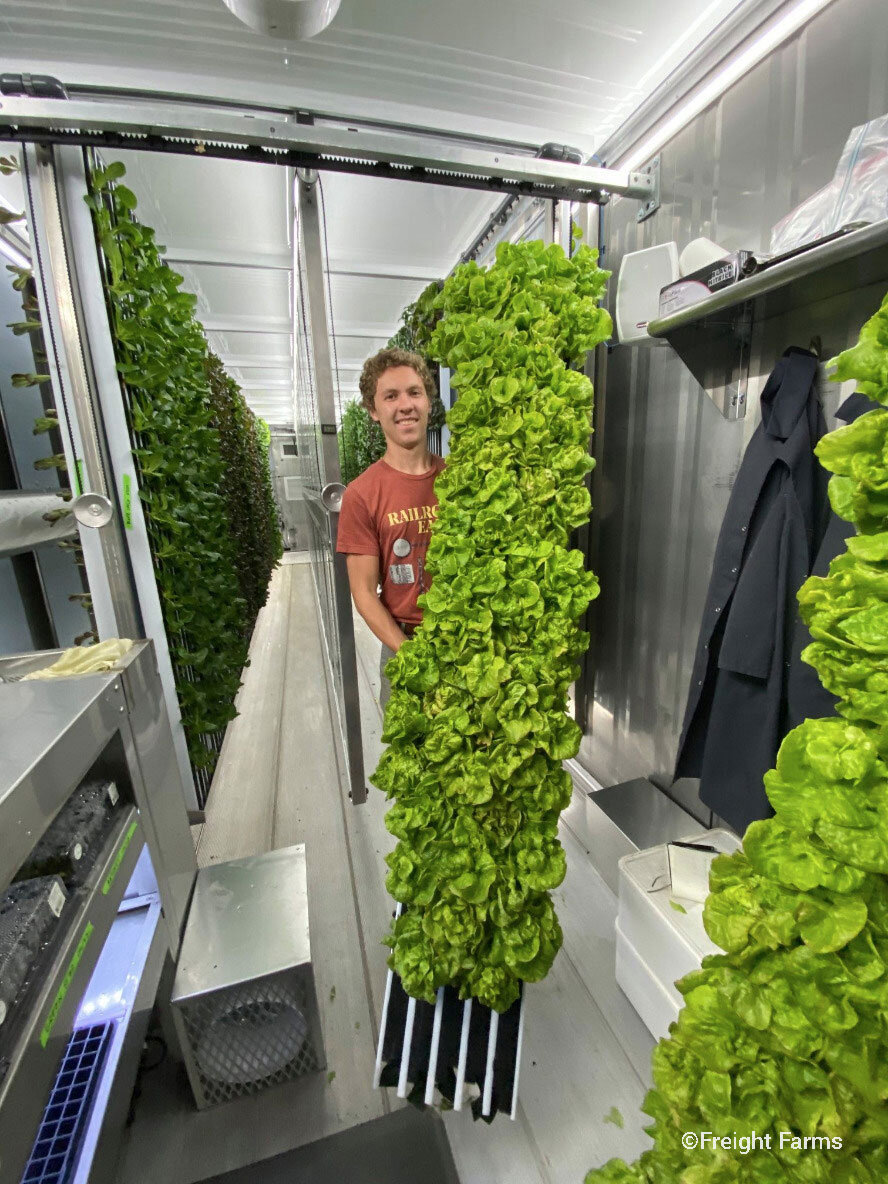
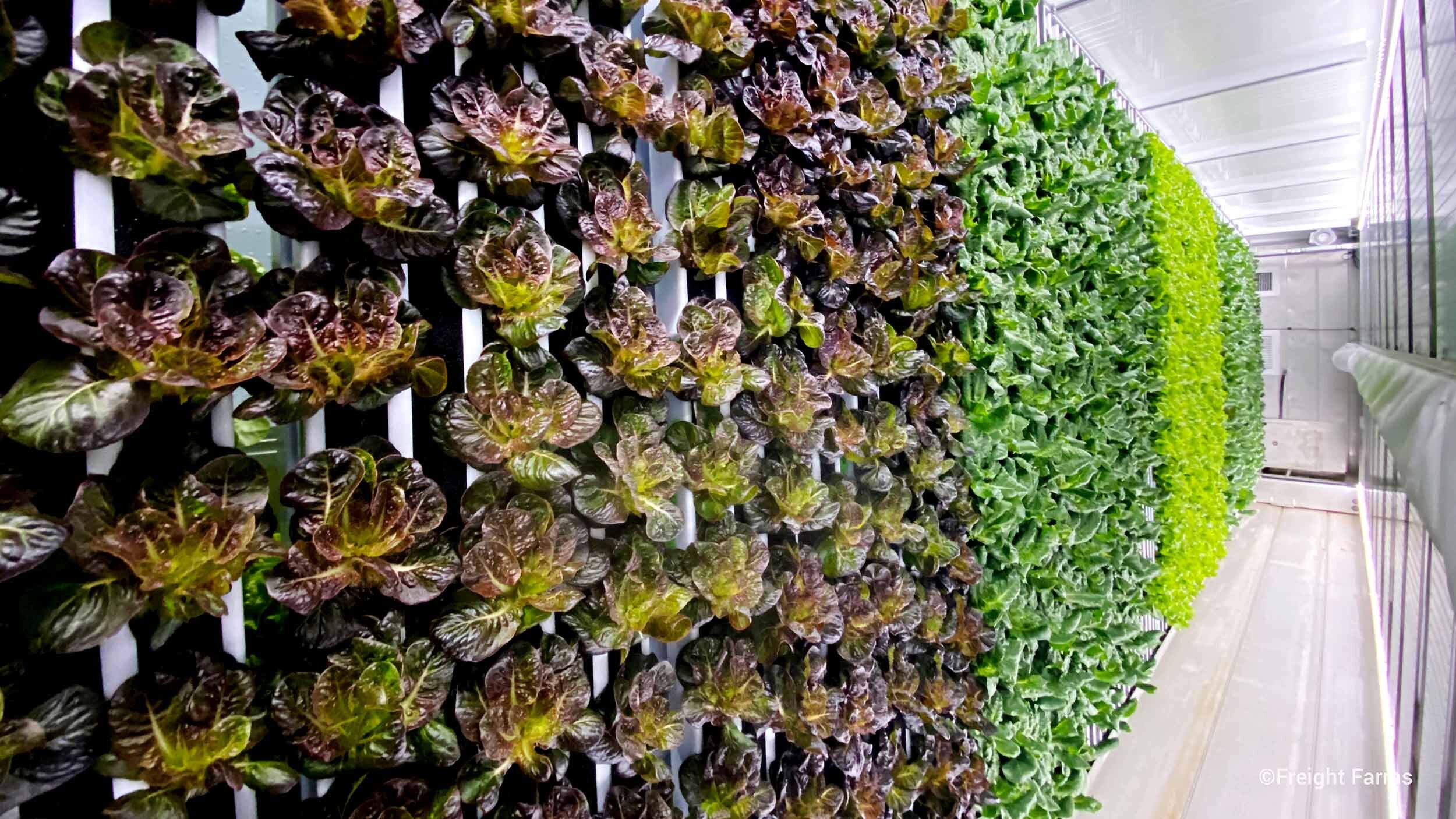
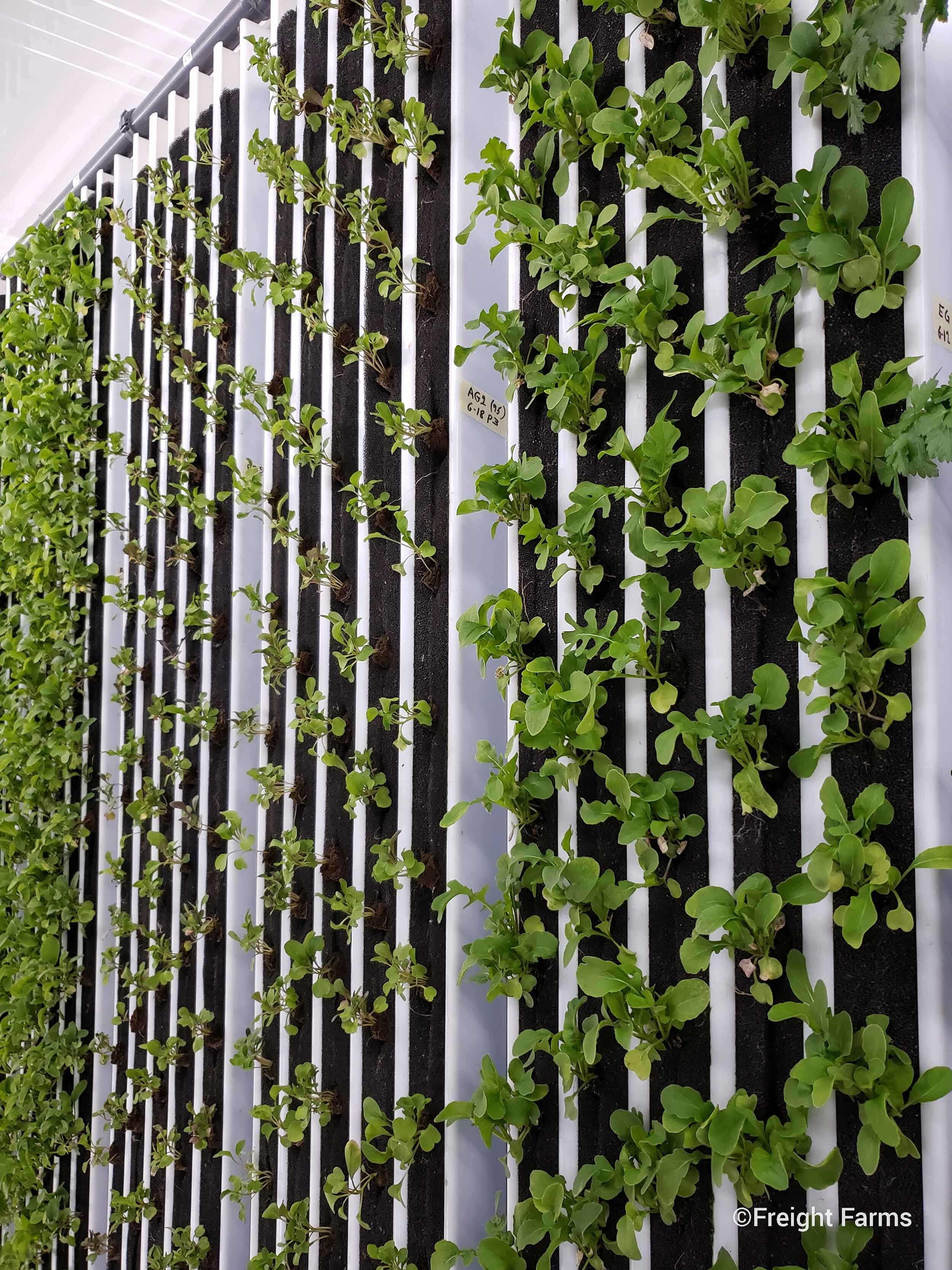
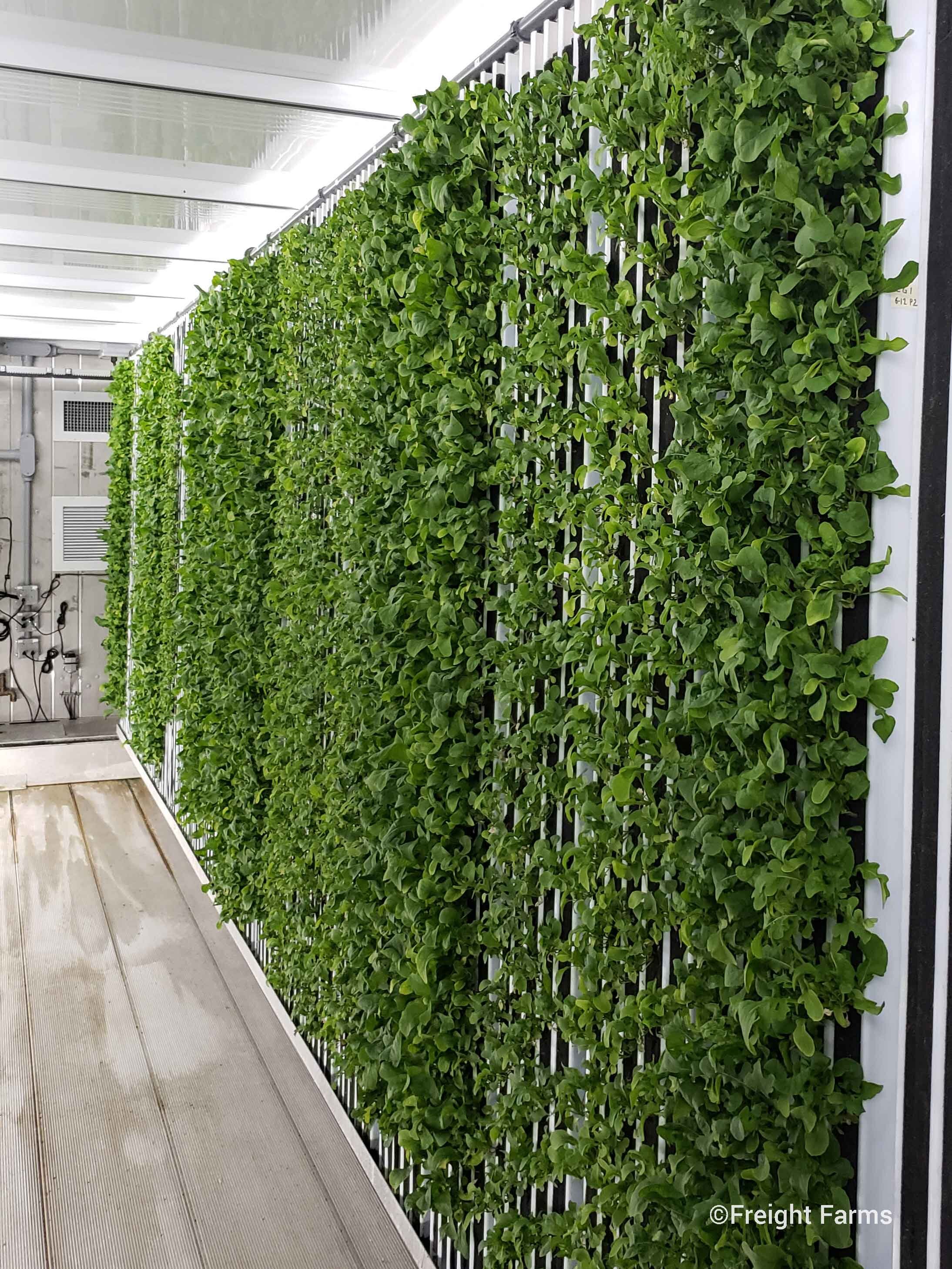

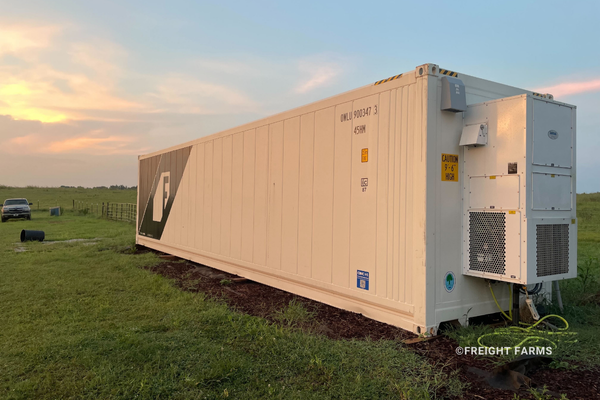
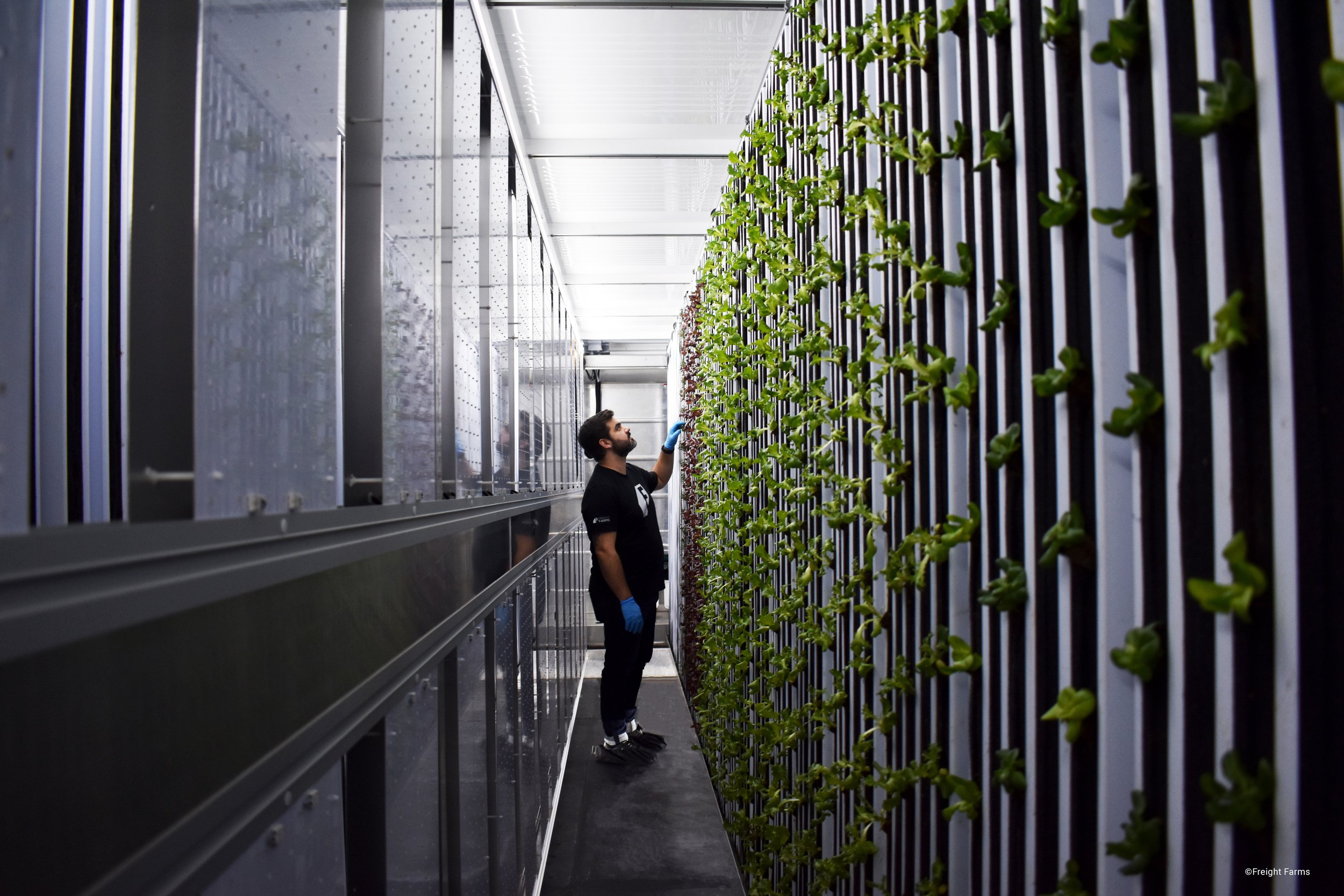










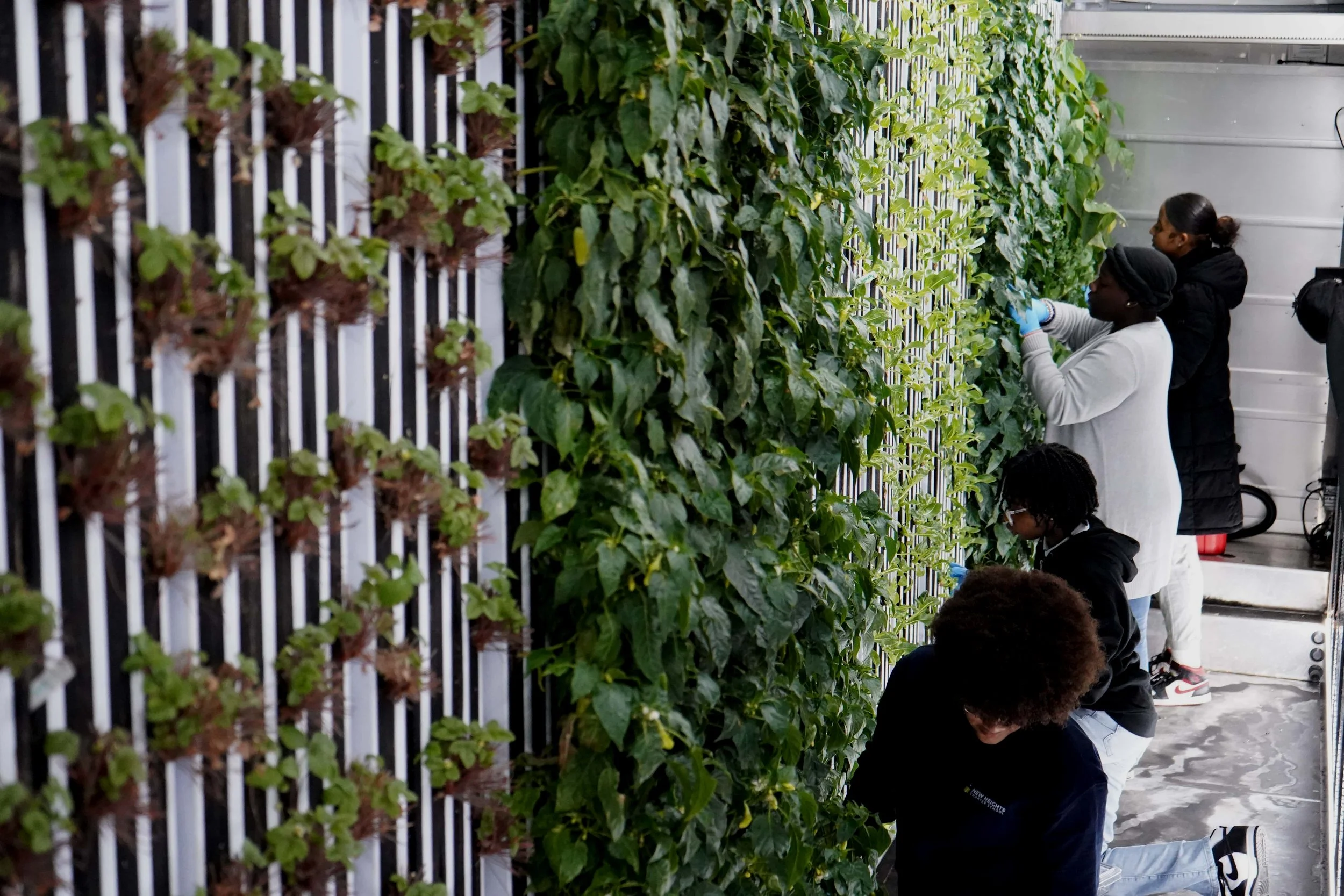

Future planning for your Freight Farms delivery? Learn what your site needs, what to expect on delivery day, and how to avoid common surprises.